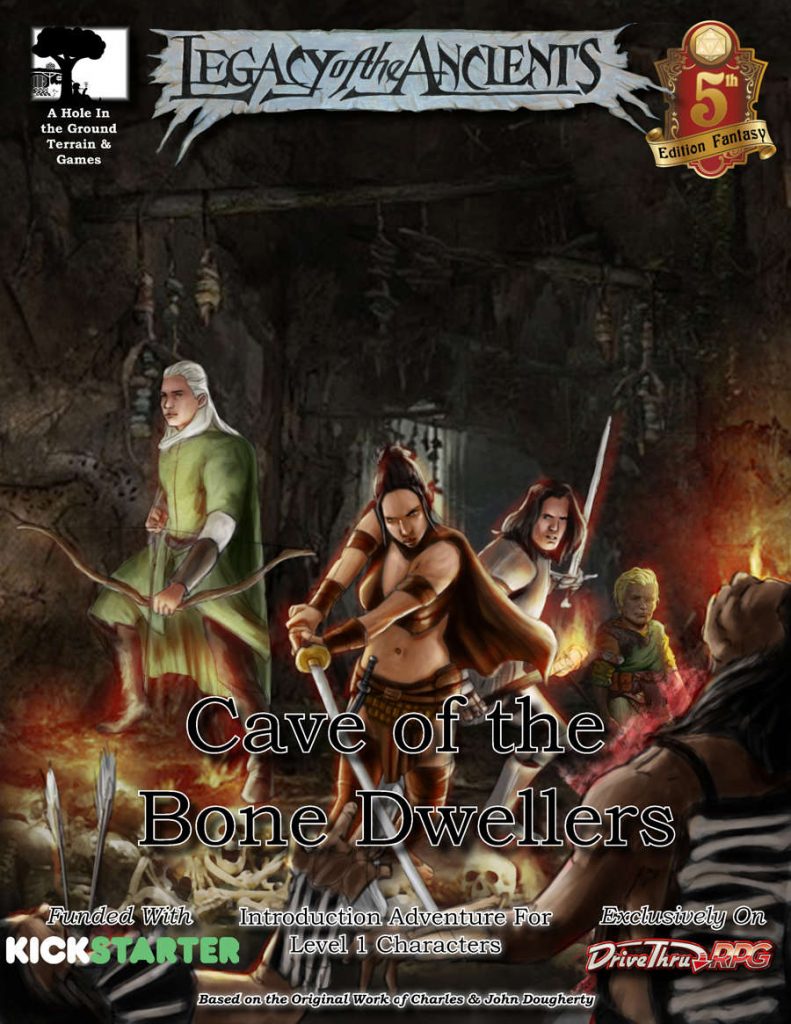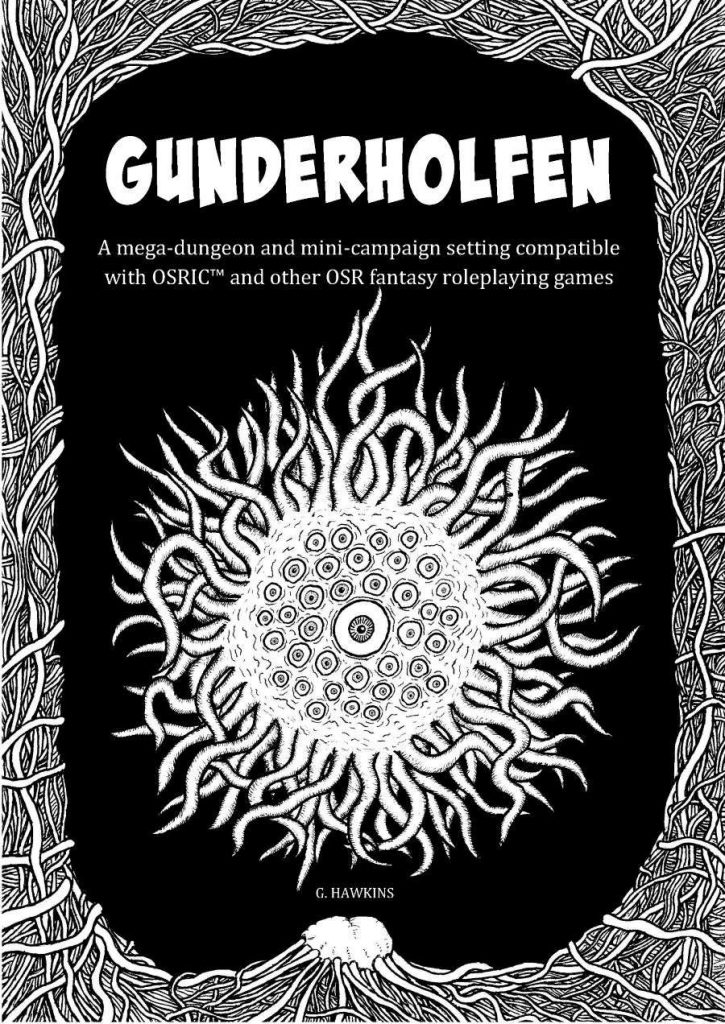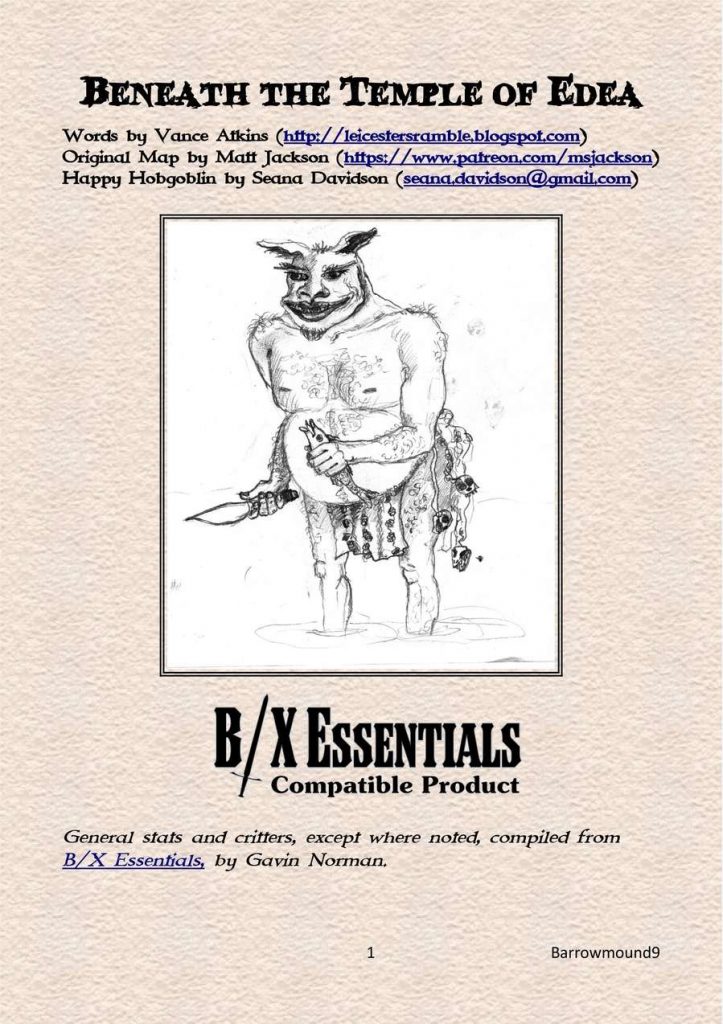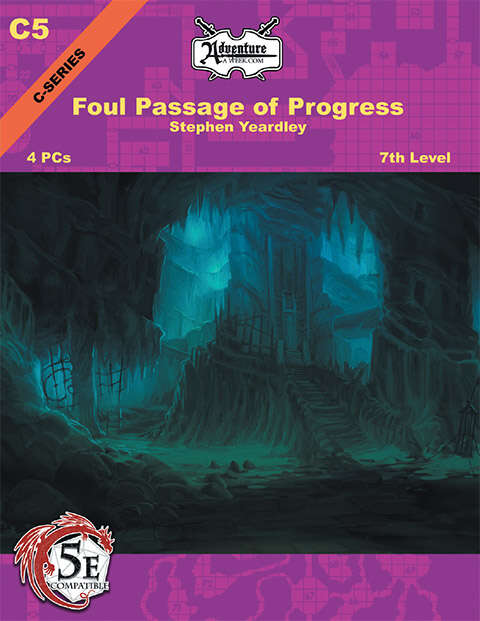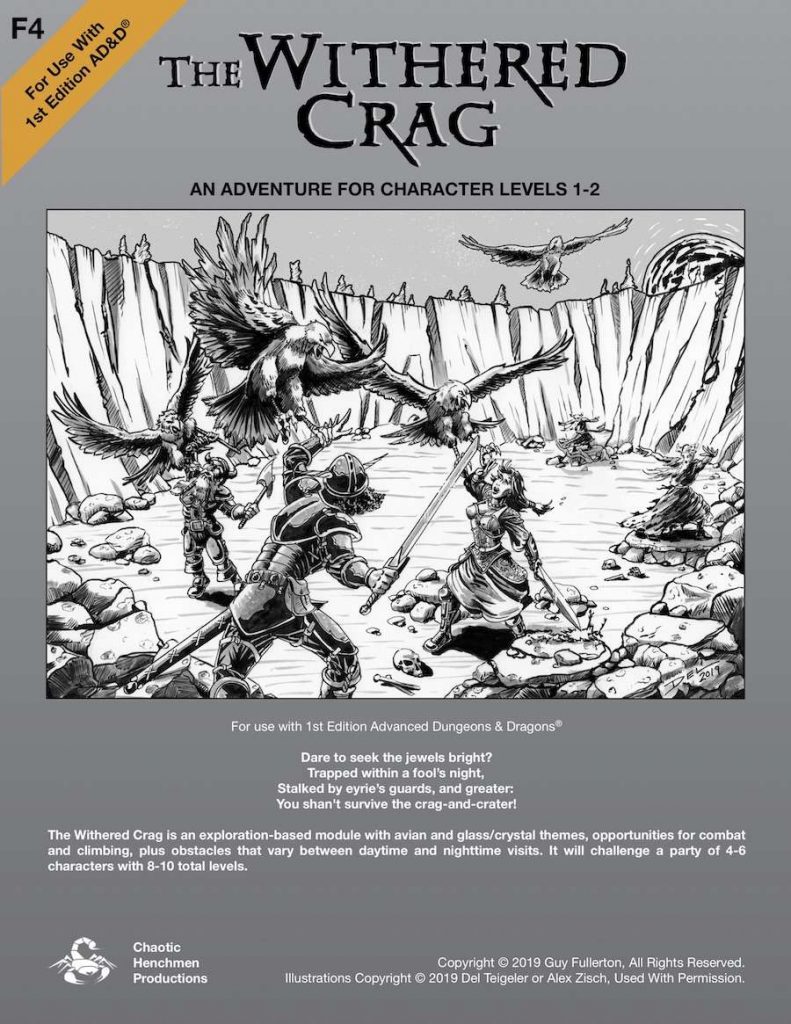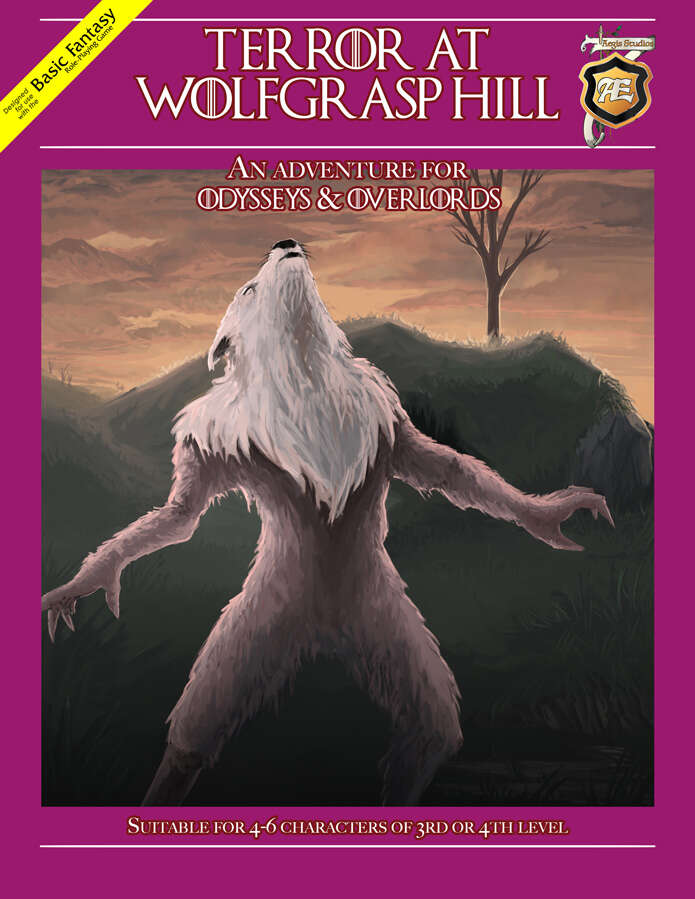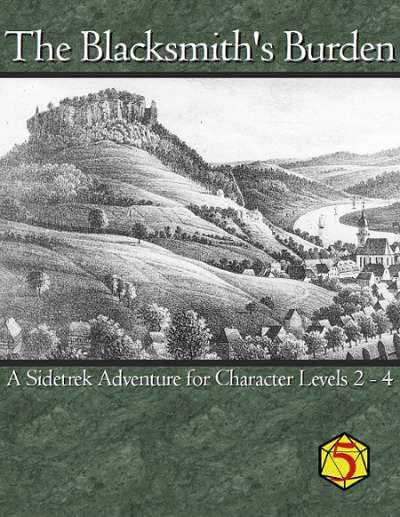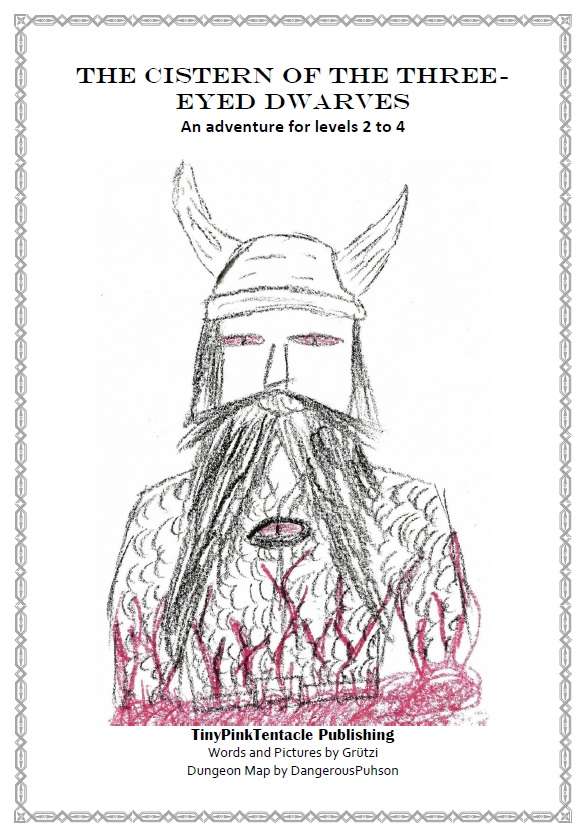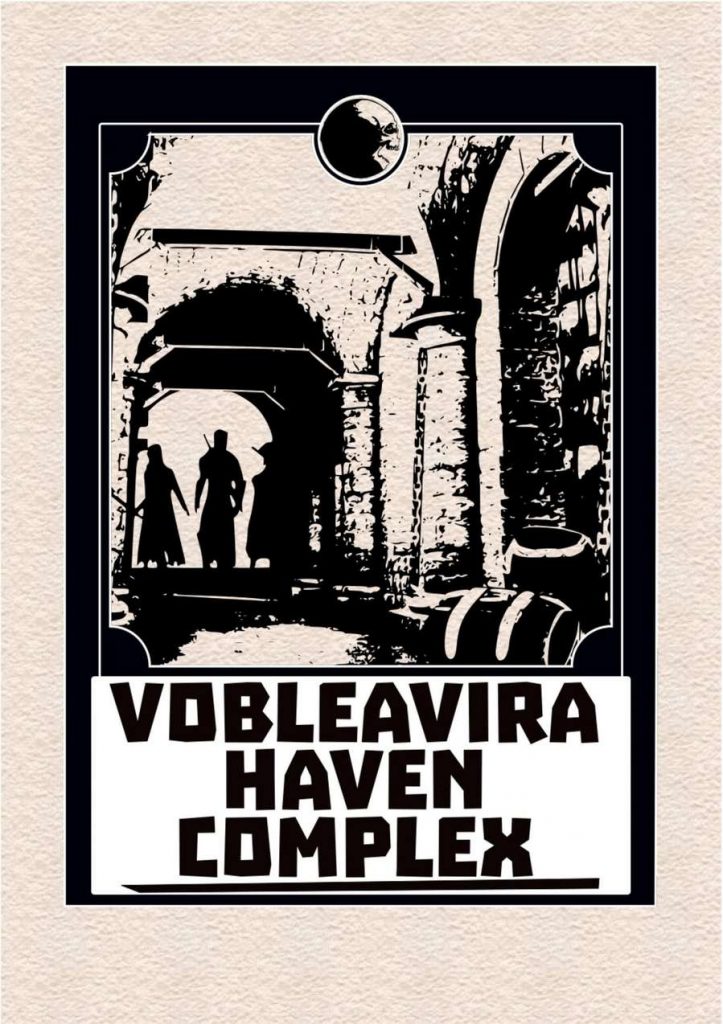
By Vance Atkins Leicester's Rambles B/X "Low Level mooks"
… So we have a cleric and thief who found themselves allied in adventures, found their own subterranean outpost, and created a space that reflects their two characters’ personalities. …
This 21 page single-column adventure features a dungeon with 24 rooms and FOUR room with creature encounters! Yet Another Generic Adventure, with a focus on irrelevant background information.
Background information drives me nuts. Specifically, background information that does not contribute to the adventure. ESPECIALLY in an adventure that desperately needs more to it. Designers seem to confuse more words, or background detail, for gameable content. “More is better”, Pay Per Word, failed novelist syndrome … for whatever reason the inclusion of a bunch of garbage that in no way contributes to an adventure gets under my skin. It’s trivia. And it gets in the way of actually useful information, making it all the more difficult to scan room text and therefore run the adventure.
You wanna throw off a phrase here or there in an adventure that otherwise focuses on gameable detail? That’s fine. An occasional sly remark to the DM? Sure. A section on legend lore in a higher level adventure? Ok.
When the adventure is desperate for specificity, gameable content, detail that adds to an evocative nature, or interactivity, and then you include motivations for someone 300 hundred years dead and is Sir Not-Appearing-In-This-Adventure … this is when the frustratoion builds up inside of me.
- Guardroom – Formerly a guard post and small barrack … the room has been stripped of most useful items.
- Barracks – A barracks room, the room has been similarly raided.
- The tunnel is one of several in the complex, designed by Dufay to quickly move forces for flanking in the event of an incursion, for storage, or as escape passages.
- Storeroom – This room held an overflow of supplies for the kitchen and elsewhere.
- Kochi’s piety would not allow him to display presentations of the group’s actions, but he did allow symbolic representations. He also allowed a modest display of captured trophies,
In each of those cases, above, you can see an emphasis on the past. A past that will NOT be interacting with the party in this adventure. The guardroom text starts by telling us its a guardroom, and then explains that it used to be a guardroom. Just as he barracks does. Just as the storeroom does. In all four cases we get some history in the form of “used to be”, none of which impacts the party, today. We know the room is a former barracks [guardroom/storeroom], that’s the room title. The guardroom has a peerhole and a couple of monsters poking around in the rubble, with a small chance of them using the peehole. The door is ron-bound with a peephole, just like every other door in the complex, or so the general dungeon overview tells us, but it has to be repeated here, in this room description. This all detracts from the room proper, the monsters poking about and the peephole. It hides it from the DM when they scan the text and, other information could have been included to make the room far more evocative, or even interactive, than it is. I’m not making the case that every room needs to be a set-piece, but that the focus of the writing needs to be evocative descriptions, scannability and, maybe, some interactivity.
Instead we’re told that the guard room used to be a guard room and that in the dungeon of iron-bound doors that this room has an iron-bound door. The emphasis is, over and over again, in the wrong place.
Unless I missed something, four rooms have monsters in them. 2 giants centipedes, a room with skeletons, and two rooms with a couple of hob/s/gobs each. This is not a jam-packed exciting place to visit, full of the wonder and mystery of D&D.
This is Pay What You Want at DriveThru with a suggested price of $1. The preview is five pages. You Get to see the map, which is decent for the size, as well as a boring rumor table, a boring wandering monster table, and some generic background information. A better preview would have included a couple of rooms also.
https://www.drivethrurpg.com/product/279317/Vobleavira-Haven-Complex?1892600

